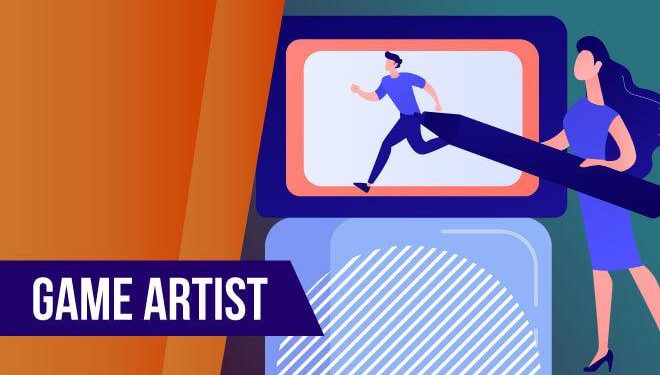How Game Artists Work and What Their Jobs Involve

Since game art is a comparatively modern course, somebody manages to hold a lot of misunderstandings about what a game artist makes. In this article, we will tell you as much as possible so that you have an idea of the work of a game artist.
Design in the gaming industry
Creating immersive images for games daily may be quite a rewarding job.
For many, this is even a dream.
The gaming industry is growing all over the world. This suggests that the dream of becoming a game artist is more real than ever.
Before diving deep into this dream, you may be wondering – What are game artists really doing?
About game art and game artists
It is a very important part of selling plays. Game art and visuals are the first impressions we get from games. For many games, they are the backbone of sales. They are arguably as important as the gameplay itself:
- A game without art will end up looking like traditional DOS and text-based, but even they have aesthetics.
- Architecture (or level design) cannot be realized without a set of artistic skills.
- Game artists are responsible for creating 2D and 3D graphics for visuals in video games. They work on such components as characters, textures, flowers, lighting, and objects. Although digital art is at the core, the ability to create freehand sketches is a very important skill for many tasks.
- Game artists represent. They can also work on promotional materials and website designs to attract as many players as possible.
- The work that an artist performs depends on his specialization. These specializations are not mutually exclusive. Large studios prefer exclusively specialized professionals, while smaller ones try to recruit generalists.
2D or 3D
2D and 3D art require different skills and tools. For this reason, artists usually specialize in 2D or 3D art.
3D art is almost certainly in higher demand. Advances in computer graphics and design and animation software have led to 3D becoming the standard medium. Many consumers still find 2D art extremely charming, however 3D art is definitely dominating the industries. This will almost certainly continue as new technologies like VR and AR also rely heavily on 3D art.
2D artist in the gaming industry
2D artists mostly work on 2D games. Their work includes painting sprites and textures for characters, effects, and more.
2D game artists are essential for 3D games. They can work both on textures for 3D models and on 2D elements of the user interface in the game. Concept art for 3D art is often drawn and rendered in 2D first.
2D artists use software like Photoshop or GIMP to create graphics. While some use a traditional mouse, others prefer to use graphics tablets.
Don’t be fooled – both methods require training and practice. None of these methods are the same as drawing with a pencil on paper.
2D animation is sometimes done frame by frame, which can mean rendering each frame separately. In other cases, generation with 2D skeletons and Tweening is used.
3D artist in the gaming industry
A 3D artist can have different responsibilities. 3D artists may be responsible for modeling, rigging, animation, or effects. They can also do character modeling, environment modeling, lighting, etc.
3D modeler
3D modelers are responsible for individual art assets in 3D plays. They create 3D models using modeling software such as 3DS Max and Blender.
They tend to have directions like characters, environments, or props.
The artists who model the characters are very good at anatomy. They know how to create realistic characters, animals, or fantastic monsters.
The environment or props are created for large paintings. Creating landscapes 3D artist is inspired by the most beautiful places on OUR PLANET. They create all the elements that are necessary to make the environment look natural and realistic. This includes furniture, vegetation, and much, much more.